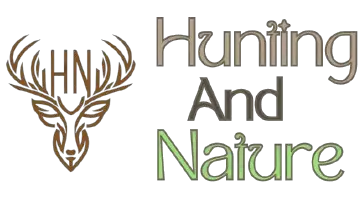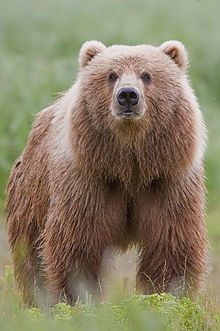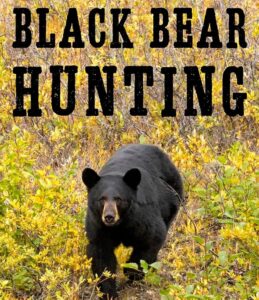Introduction to the Kodiak Bear
The Kodiak bear (Ursus arctos middendorffi), a towering figure of strength and resilience, is not just a bear but a legacy of Alaska’s untamed wilderness. This species, exclusive to the Kodiak Archipelago, represents the wild heart of the region, thriving in an environment that has remained relatively untouched by human development.
Habitat and Distribution

Kodiak Island: The Bear’s Domain
The Kodiak Archipelago, a mosaic of rugged mountains, dense forests, and meandering rivers, forms the perfect backdrop for the Kodiak bear’s existence. The island’s isolation has fostered a unique ecosystem where these bears have lived for thousands of years. The geography of Kodiak, with its remote valleys and coastal food sources, creates an ideal habitat for these giants, ensuring a stable population that is deeply intertwined with the island’s natural history.
Important Data:
- Location: Kodiak Archipelago, Alaska
- Habitat: Dense alder forests, meadows, and coastal zones
- Population: Approximately 3,500 bears
Adaptations to the Alaskan Wilderness
Kodiak bears have evolved to master the harsh conditions of Alaska. Their thick fur and substantial fat reserves enable them to withstand cold temperatures and scarce food during winter. The seasonal abundance of food, particularly salmon, allows them to gain the necessary weight to survive the leaner months, showcasing a remarkable adaptation to their environment.
Key Adaptations:
- Thick fur: Insulation against cold weather
- Fat reserves: Essential for hibernation and energy
- Dietary flexibility: Ability to switch between various food sources as available
Physical Characteristics
Size and Weight: How Big is the Kodiak Bear?
Kodiak bears are among the largest bears in the world, with males routinely reaching weights of up to 1,500 pounds (680 kg) and standing up to 10 feet (3 meters) tall when on their hind legs. This immense size is a result of their rich diet and genetic predisposition, setting them apart from other bear species.
Size Comparison Table:
| Bear Species | Average Weight (Males) | Height |
|---|---|---|
| Kodiak Bear | 600-1,500 lbs | 10 ft |
| Grizzly Bear | 400-790 lbs | 8 ft |
| Polar Bear | 900-1,600 lbs | 10 ft |
Color Variations and Features
The coat of a Kodiak bear ranges from a light blond to a rich chocolate brown, often with variations and shades that change with the seasons and age. Cubs are born with a softer, lighter fur, which darkens as they mature. This color diversity plays a crucial role in their camouflage and signaling to other bears.
Interesting Fact: Cubs retain a distinctive natal ring, a lighter-colored band around their neck, for the first few years of life.
Diet and Feeding Habits
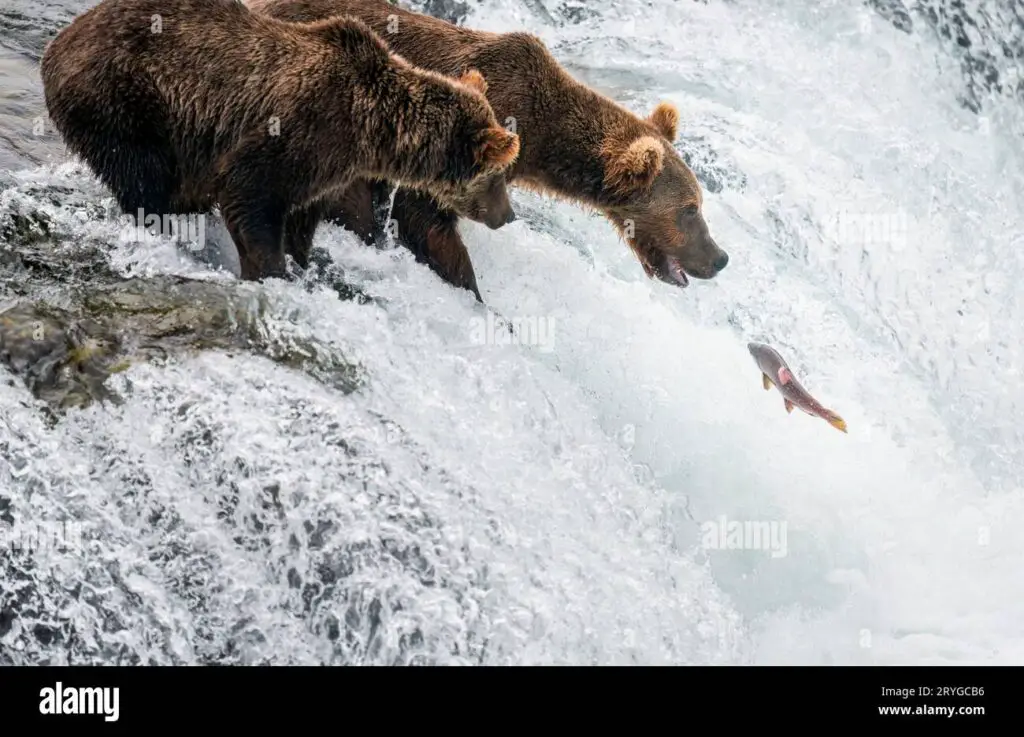
From Salmon to Berries: A Diverse Diet
The Kodiak bear’s diet is a testament to the rich biodiversity of the Kodiak Archipelago. Primarily omnivorous, these bears feast on the abundant salmon runs in the summer and switch to berries, plants, and occasionally ungulates like deer or elk, depending on seasonal availability.
Dietary Breakdown:
- Spring: Fresh vegetation, carrion
- Summer: Salmon, berries
- Fall: Berries, high-fat nuts, late salmon runs
- Winter: Stored fat from summer and fall feeding
The Role of the Kodiak Bear in the Ecosystem
As apex predators, Kodiak bears play a pivotal role in maintaining the ecological balance of their environment. They help regulate salmon populations, disperse seeds through their scat, and their foraging habits contribute to nutrient cycling, supporting the overall health of the ecosystem.
Ecological Impact:
- Salmon population control
- Seed dispersion
- Nutrient cycling
Behavior and Social Structure
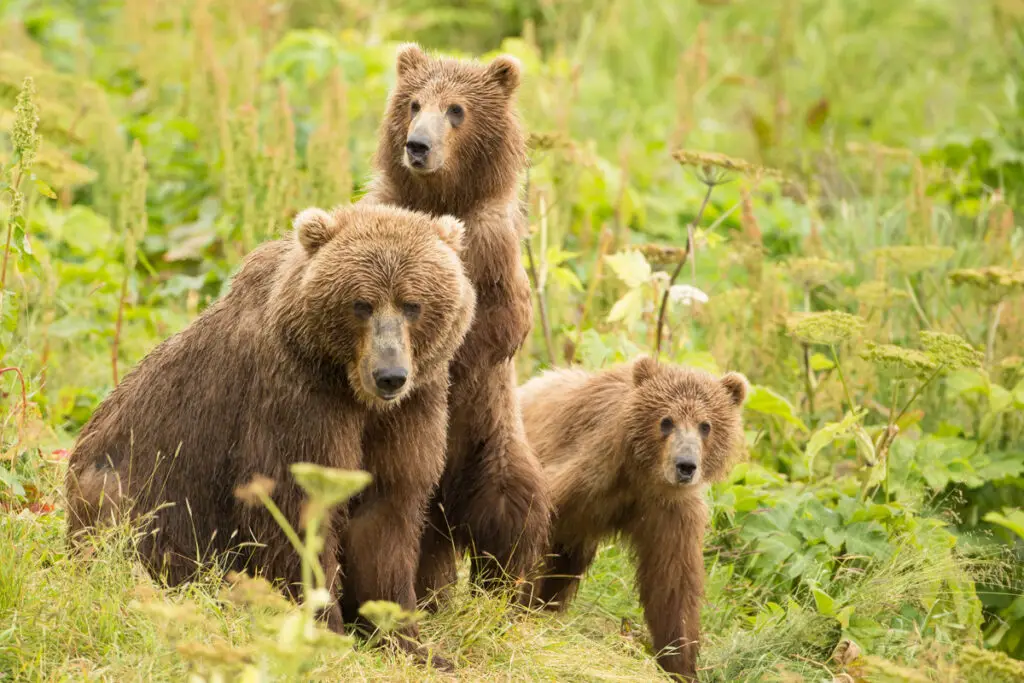
Solitary Yet Sociable: Kodiak Bear Interactions
Despite their solitary nature, Kodiak bears can exhibit complex social behaviors, especially in areas of abundant food like salmon streams. Hierarchies are established based on size, age, and temperament, with larger, older bears typically dominating prime fishing spots.
Social Dynamics:
- Dominance: Based on size and age
- Communication: Vocalizations, body language
- Gathering: Common in food-rich areas
Reproduction and Lifecycle
Kodiak bears have a reproductive cycle that is closely tied to the island’s seasonal rhythms. Females, or sows, give birth during the winter denning period to cubs that are blind, hairless, and weigh less than a pound. These cubs will stay with their mother for up to three years, learning vital survival skills.
Lifecycle Stages:
- Birth: January-February
- Cub phase: 0-3 years
- Independence: 3-5 years
- Maturity: 5-8 years
Conservation Status
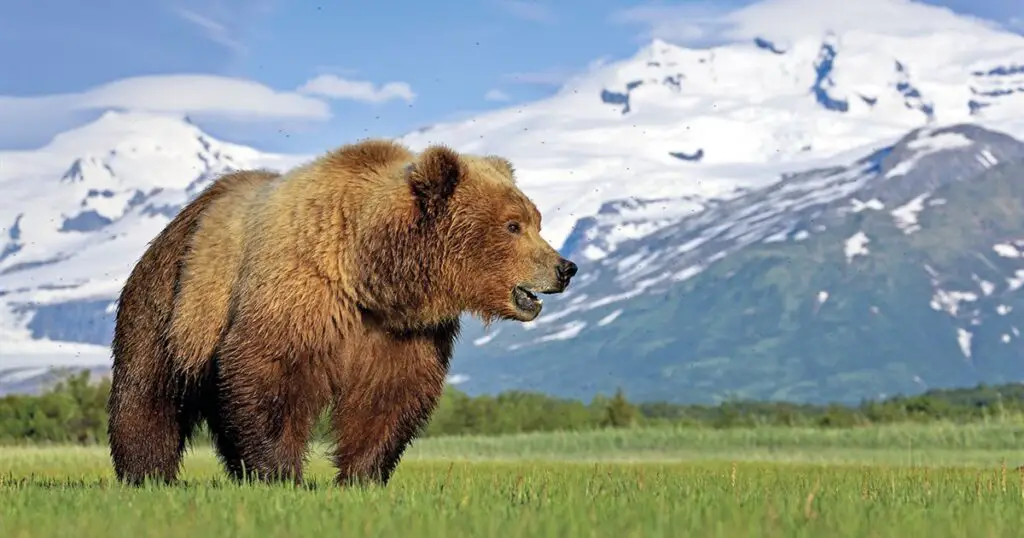
Threats to the Kodiak Bear Population
While Kodiak bears are not currently endangered, they face threats from illegal hunting, habitat encroachment, and climate change. The delicate balance of their ecosystem means that even small disruptions can have significant impacts.
Conservation Challenges:
- Habitat loss
- Climate change effects
- Human-wildlife conflict
Conservation Efforts on Kodiak Island
Efforts to protect the Kodiak bear include strict hunting regulations, habitat preservation, and research programs. The Kodiak National Wildlife Refuge plays a crucial role in these conservation initiatives, ensuring the bears’ habitat remains intact and their populations stable.
Conservation Actions:
- Regulated hunting
- Habitat protection
- Research and monitoring
Human and Bear Interactions

Coexisting with the Kodiak Bear
The relationship between Kodiak bears and humans is complex, shaped by centuries of coexistence. Education and awareness programs are key to managing interactions, ensuring both bear and human safety.
Coexistence Strategies:
- Bear-aware education programs
- Secure trash management
- Wildlife viewing guidelines
Bear Viewing and Hunting: Managing the Balance
Bear viewing has become a popular activity on Kodiak Island, providing economic benefits while fostering a greater appreciation for these animals. Hunting, when regulated, can be part of a sustainable conservation strategy, balancing the needs of the bears with those of the local community.
Balancing Interests:
- Sustainable hunting quotas
- Ethical viewing practices
- Economic considerations
Conclusion
The Kodiak bear, a majestic and powerful symbol of Alaska’s wilderness, continues to captivate and inspire. Through careful management and respect for their natural habitat, we can ensure that these magnificent creatures endure for generations to come, embodying the wild spirit of Kodiak Island.
Frequently Asked Questions (FAQs)
How do Kodiak bears compare in size to other bear species?
Kodiak bears are among the largest bears in the world, comparable in size to the polar bear. Adult male Kodiak bears can weigh between 600 to 1,500 pounds and stand up to 10 feet tall when on their hind legs. In contrast, grizzly bears, their closest relatives, typically weigh between 400 to 790 pounds and stand up to 8 feet tall. The significant size of Kodiak bears is attributed to their rich diet and the lack of natural predators on Kodiak Island.
What is the lifespan of a Kodiak bear in the wild?
Kodiak bears can live up to 20 years in the wild, although a lifespan of 15 to 18 years is more common. Factors influencing their lifespan include food availability, habitat quality, and human-related threats. In protected areas like the Kodiak National Wildlife Refuge, bears can live longer due to reduced human conflicts and consistent food sources.
Can Kodiak bears hibernate, and how long does it last?
Yes, Kodiak bears do hibernate, typically from late October or November until April or May, depending on weather conditions and food availability. During hibernation, they retreat to dens in the mountains or hillsides, where they rely on fat reserves accumulated over the summer and fall. This period allows them to conserve energy during the coldest, food-scarce months of the year.
What do Kodiak bears eat, and how does their diet change with the seasons?
Kodiak bears are omnivores with a diet that changes seasonally. In spring, they eat emerging vegetation and carrion. Summer brings a plentiful supply of salmon, which is a significant food source, along with berries and other available vegetation. In the fall, they focus on high-fat foods like more berries and nuts to build up fat reserves for winter. During winter, while in hibernation, they do not eat and live off their fat reserves.
Are Kodiak bears dangerous to humans?
Kodiak bears generally avoid human contact and are not inherently dangerous. However, they can be dangerous if surprised, threatened, or if they associate humans with food. Proper bear safety education, secure food storage, and maintaining a respectful distance can significantly reduce the risk of dangerous encounters. In Kodiak, bear-human conflicts are managed through education, regulation, and habitat protection to ensure safety for both bears and humans.
